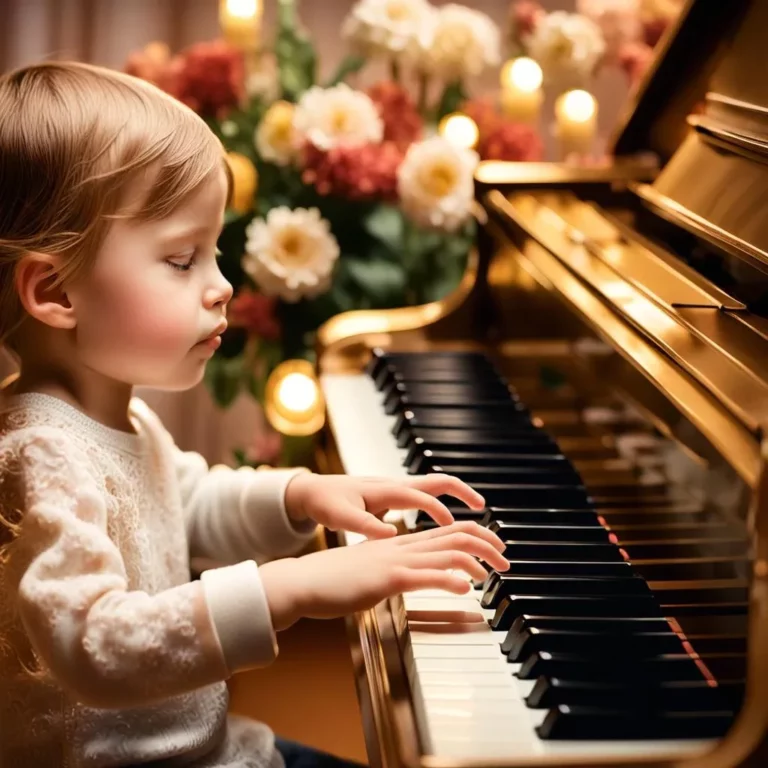
The Wurlitzer electric piano is a musical instrument that has captured the hearts of musicians and listeners alike for decades.
Its unique sound, portability, and versatility have made it a popular choice for a wide range of musical genres, from jazz and rock to pop and R&B.
In this article, we’ll take a closer look at the history of the Wurlitzer electric piano, its various models, how it works, and why it remains a beloved instrument to this day.
MORE: To learn more about the Wurlitzer brand check out the article below about Wurlitzer Jukeboxes:
Wurlitzer Jukeboxes – Revolutionary Vintage Music Players
A Complete Guide to the Wurlitzer Electric Piano
Contents
History
The Wurlitzer electric piano was first introduced in the late 1950s as a more portable and affordable alternative to the traditional acoustic piano. It was designed by the Rudolph Wurlitzer Company, which also designed large Pipe Organs.
Another musical device that gave the Wurlitzer brand international recognition was the jukebox, which they started manufacturing in the 1930s.
The Wurlitzer was the iconic jukebox of the Big Band era and the company became well-known for its jukeboxes, as well as electric pianos and organs.
The Wurlitzer electric piano quickly gained popularity among musicians of all genres, thanks in part to its distinctive sound and ease of use.
Despite its popularity, the Wurlitzer electric piano was eventually phased out in the 1980s as digital synthesizers and samplers became more common. However, its unique sound has continued to influence musicians to this day.
Anatomy
So how does a Wurlitzer electric piano work? At its core, the instrument is a type of electro-mechanical piano. Instead of using hammers to strike strings like an acoustic piano, the Wurlitzer electric piano uses hammers to strike metal reeds.
When a key is pressed, a hammer strikes a metal reed, causing it to vibrate and produce a sound. The sound is then amplified by a built-in speaker or external amplifier.
The Wurlitzer and Rhodes EP are often seen as very similar instruments, and they certainly share many characteristics with their combination of electric and mechanical sounds.
The main difference though is that the Wurli sound is produced with reeds, whereas the Rhodes sound is produced with tines.
This gives the Wurlitzer a ‘sharper’ and grittier tone. Listen to ‘What’d I Say Pt. 1’ by Ray Charles, and ‘I Heard It Through The Grapevine’ by Marvin Gaye, and you will hear the classic Wurli sound in action.
The Wurlitzer electric piano also features a unique pickup system that captures the sound of the vibrating reeds and sends it to the amplifier.
This pickup system is what gives the Wurlitzer its distinctive sound, which is often described as warm, mellow, and slightly distorted.
The volume and tone of the sound can be adjusted using various controls on the instrument, such as the volume knob, tone knob, and vibrato effect.
Wurlitzers have been used by many artists such as Ray Charles, Stevie Wonder, and Marvin Gaye. The 140B was used by The Doors on their hit song “Riders on the Storm.”
You can find many faithfully recreated ‘Wurli’ sounds in modern VST plugin instruments. To see some of the best options, both free and paid, check out the following articles:
The Best Free VST Plugins: Synthesizers, Pianos & More!
The Best Paid VST Plugins
Best Models
While all models of the Wurlitzer electric piano have their own unique sound and charm, some are more highly regarded than others. The Wurlitzer electric piano went through several different models throughout its production history.
The earliest models, the 100 and 110, were released in 1954 and featured a simple design with 49 keys. The 200 series, which was released in 1960, was a more advanced model with 64 keys and a built-in amplifier.
The 200A, which was released in 1968, became the most popular and recognizable model of the Wurlitzer electric piano.
It featured a sleek design with rounded corners, a vibrato effect, and a built-in speaker. The rare model 720 was released in the late 1970s and was highly regarded and sought-after.
As for used models and deals to look for in 2023, that’s largely a matter of personal preference.
If you’re in the market for a used Wurlitzer electric piano, it is important to understand the age of the instruments and know how to inspect the instruments for both cosmetic and mechanical damage.
Also, if you are looking for used deals on Wurlitzer EPs, or spare parts, check out these listings:
Wurlitzer 200A
As mentioned earlier, the 200A is the most popular and recognizable model of the Wurlitzer electric piano. It has been used by countless musicians over the years, including Ray Charles, Supertramp, and Steely Dan.
Wurlitzer 140B
The 140B is a lesser-known model that was released in the early 1960s. It has a more subdued sound than the 200A and is often favored by jazz musicians.
Wurlitzer 720
The 720 was a rare and highly sought-after model that was only produced for a short time in the late 1970s. It features a built-in chorus effect and is known for its warm, vintage sound.
Popularity and Timelessness

Image: Marc Wathieu / Original file / No changes
Despite being phased out in the 1980s, the Wurlitzer electric piano remains a beloved instrument among musicians and collectors.
Its unique sound and vintage aesthetic have made it a popular choice for recording studios, live performances, and even home use. They are still popular among musicians today for a few reasons.
One is the unique sound they produce, which is characterized by a warm, bell-like tone that sits well in a mix. Another is their portability – Wurlitzer electric pianos were much easier to move around than traditional acoustic pianos.
This is not as much a factor today with the invention of lightweight and portable stage pianos such as the Nord, Yamaha, Korg, and Roland Stage Pianos, which often included faithfully recreated Wurlitzer sounds from different eras.
In recent years, there has been a resurgence of interest in the Wurlitzer electric piano, with many musicians incorporating its sound into their music.
This renewed interest has also led to a rise in the value of vintage Wurlitzer electric pianos, with some models selling for thousands of dollars.
Additionally, Wurlitzer pianos, like vintage Rhodes instruments, have a retro appeal. This has made them popular in genres like indie rock and alternative pop.
The recreations and sample recordings of the Wurlitzer sounds found in modern stage pianos allow modern musicians to experiment, compose, record, and perform with these excellent vintage instruments.
Whether you are in the market for a used vintage Wurlitzer, or you are looking for a high-quality modern stage piano, you can still achieve a similar sound on stage and in recordings.
If you opt for the modern route, a stage piano or ‘workstation’ piano can give you the sounds you are looking for, with a wide range of Rhodes and Wurly sounds onboard.
Check out the following articles about the best stage pianos and workstations available in 2023.
The NEW Nord Stage 4 is Here! (Review)
Is the Korg Kronos Still the Best Workstation?
The Korg Nautilus Full Review – The Best Workstation in 2023?
Digital Pianos – The Best Pianos for Beginners in 2023
Conclusion
In conclusion, the Wurlitzer electric piano is a classic instrument that has stood the test of time. Its unique sound, portability, and versatility have made it a favorite among musicians for decades, and its influence can still be heard in modern music today.
Whether you’re a seasoned musician or a casual listener, the Wurlitzer electric piano is a must-have for any music lover’s collection.
Wurlitzer EPs remain popular in 2023 thanks to excellent recreations and recording of their sound, coming pre-installed on many modern digital and stage pianos.



